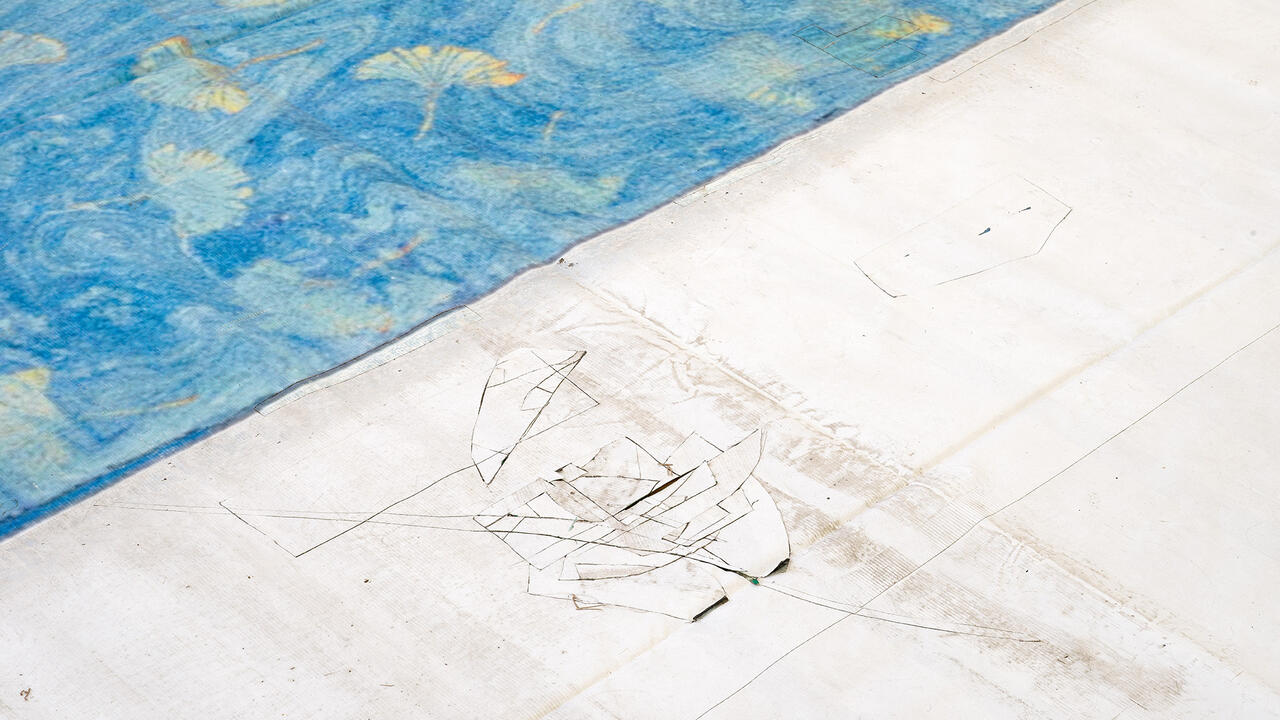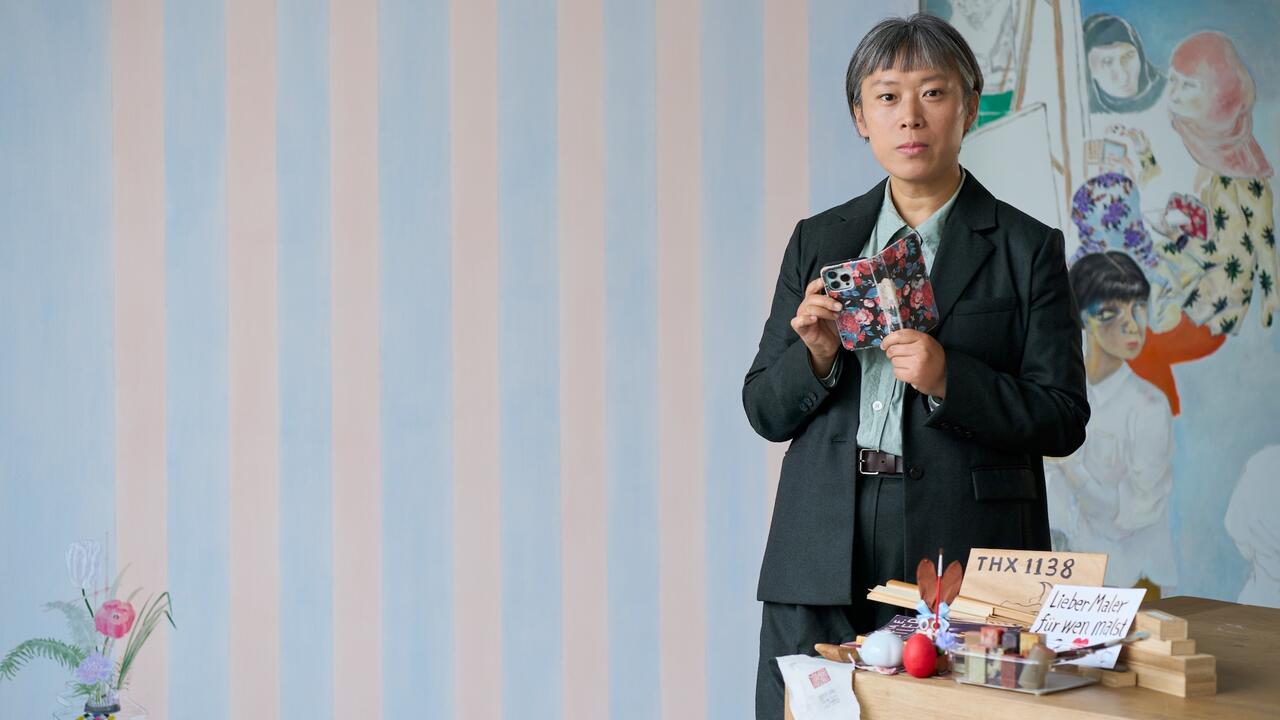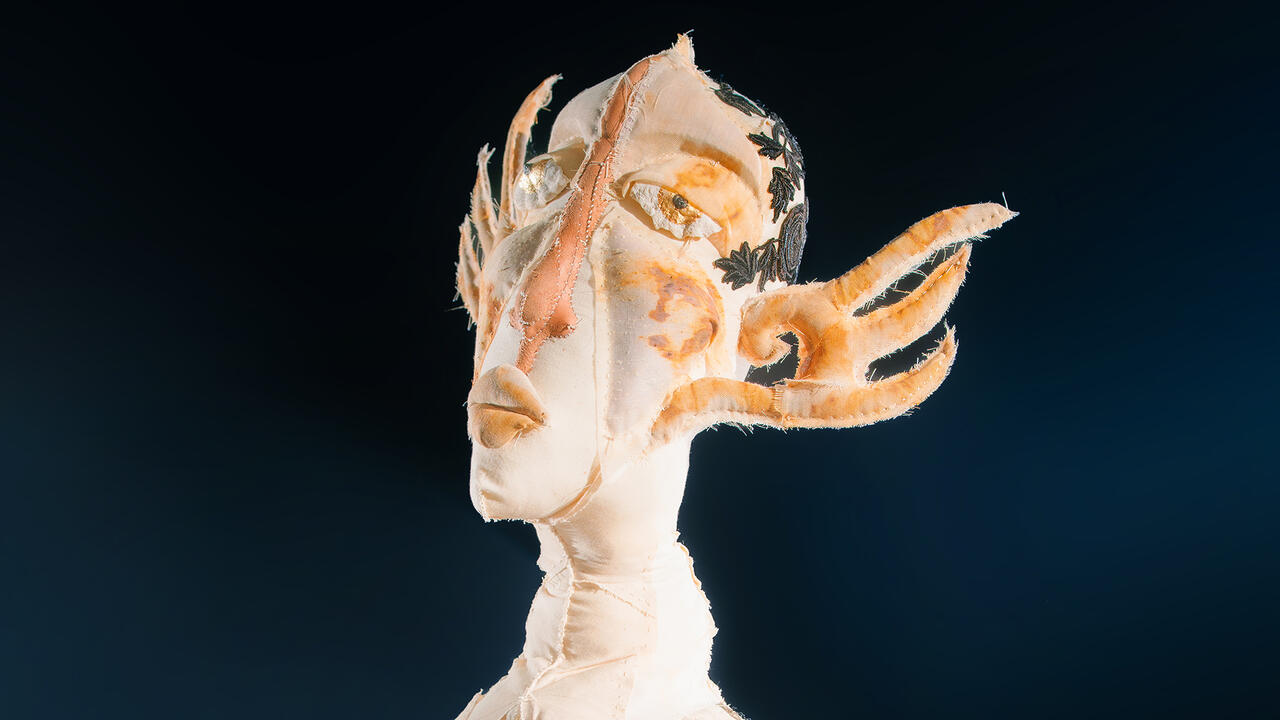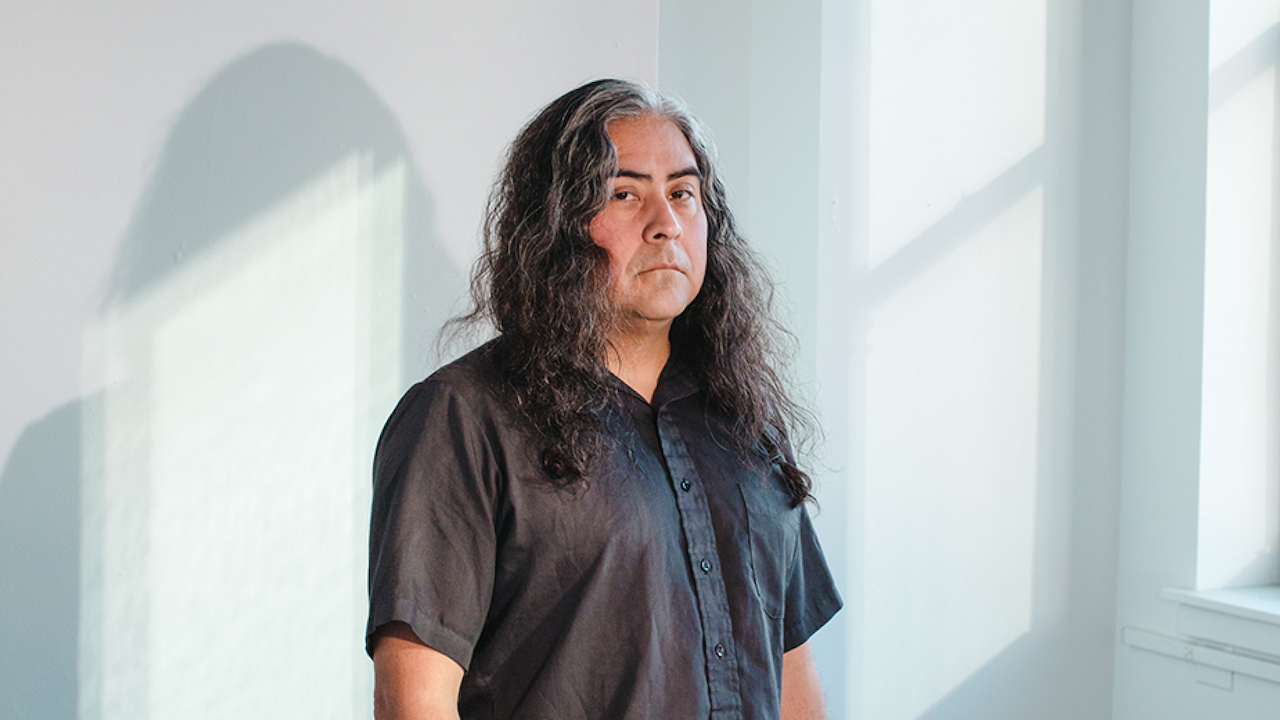Hirsch Perlman saved from Avalanche
Fiction
Fiction

H's Dreams
'When I was a little boy a hand would come in through my bedroom window and beckon me. Not a scary hand, but a needy hand. I used to offer it things. My encyclopaedia, Lego, toy cars, my Apollo space rocket. The hand was not flesh. It was grey with streaks. It was my mother.'
Selected Timeline
Born in February 1960, Chicago; bar-mitzvahed 13 years later; graduated Yale University in 1982, at the age of 22. First solo show at Donald Young, 1985. In 1996 H completes a work in the project room at the Museum of Modern Art, New York, consisting of photographs and five dialogue pieces shot on video, one of which is performed by two Hollywood actors. The piece deals with language and miscommunication, an H constant. In 2001 at Blum & Poe H shows 48 photographs of cardboard figures interacting in a small, carpeted room. Images of confinement, escape, impending doom, sexual curiosity, sadness, solitude, chaos, violence, intense silliness, being at the end of one's rope. In 2002 H is selected to be in the Whitney Biennial for a second time (the first in 1989). H: kind to animals, bookish, humble, sensitive, frets about his future every single day.
H Meets Girl/
H Loses Girl
H corresponds with A, a woman in Los Angeles, falls in love, packs up, leaves Chicago, moves out west to be with her. A takes one bedroom as her studio. H converts the garage into a studio/photo lab, builds a 12' 8'' by 10' deck in front of the garage, plants bamboo, cactus, sage and a variety of reedy and succulent things. Perfects domestic life. A few years pass. A packs up and leaves. Relationship over. Heartbreak. A's vacant studio a raw wound, a graveyard. I run into H on the street, in his car, at a Stop sign. He's devastated, weeping. Drag him back to my apartment. A dozen shots of Bushmills lined up in a tight row. Back home, alone, H refuses to go inside the room. Her vacated room, a chamber of pain (ripe habitat for H). Eventually he crosses the barrier, steps inside. Strange. Interesting. A bare room, loaded with invisible information.
Plays with Dolls
H spends time in empty room, constructs a six-foot cardboard figure out of the discarded packing materials from departed A, leans it/him up against the wall, one leg bent at a 45-degree angle. The cardboard figure is male, no hair, just blunt corners and lots of duct tape. H stares at the guy. The new friend is bewildered, yet relaxed.
He looks at nothing. His expression never changes. He's not going to leave. He likes H. H's feelings are more complicated. H offers the cardboard fellow a chair. The guy sits down, crosses a leg over his knee. H assembles a second figure.
Pin-hole
H makes a pin-hole camera with the same materials the above-mentioned cardboard figures are made from. The camera, a little dark room all its own. H's pin-hole is literally one of the boys, a pure device; it shares space with H and the cardboard fellows, dutifully records their antics. Everything in focus. Best, crudest, most natural method of putting viewer in the space with new pals. H, always lurking outside the frame.
Bluebeard's Room
An enormous need for privacy asserts itself. No one is allowed in this room except H, the cardboard figures and his box camera. Friends are intrigued, would like to enter, but are not welcome. A sign pinned to the door says as much: 'GO AWAY'. A second figure is constructed, enters the fray. H has them get drunk, carouse, get physical, go down on each other.
'The boys are misanthropes', H declares. 'Believe me, I know.'
H, the puppeteer, the warden with camera and film, sunlight edging in through south- and east-facing windows.
'Have Your Industrious Hands Followed All Clandestine Traces That Only You and I Know of?' (Oskar Kokoschka to Hermione Moos, doll-maker)
In 1918 Oskar Kokoschka commissioned a doll-maker to produce a soft, skin-textured doll in the likeness of Alma Mahler, the widow of composer Gustav Mahler, whom he was madly in love with. Kokoschka made drawings and paintings of his Alma doll, bought her/it a large supply of lingerie, took her out to dinner and the theatre and had sex with her. He called the Alma doll 'my artificial woman'.
Connection: lost love.
After being abandoned by A, H made a series of male figures to play with and speak to, to keep him company.
H's reaction to Kokoschka's Alma doll: 'I'm not that aberrant.'
Kokoschka on H's playmates: 'Why cardboard?'
H & K
H is fond of saying 'No worries'. An unlikely phrase coming from one of the great fretters of our time, reminiscent of another heavyweight brooder, Kafka.
Their exchange:
H: Have you ever been rejected?
K: The gesture of rejection with which I was forever met did not mean: 'I do not love you' but 'You cannot love me, much as you would like to; you are unhappily in love with your love for me, but your love for me is not in love with you.' It is consequently incorrect to say that I have known the words 'I love you'; I have known only the expectant stillness that should have been broken by my 'I love you'; that is all I have known, nothing more.
H: Whoa.
Plays More
with Dolls
H drinks V8 juice everyday and wraps the cans around the bellies of the cardboard figures, forming a sort of aluminium ammo belt. The look is very Mod, very tomorrow. H shoots pictures from the boys' points of view, as if the figures were taking pictures of each other. H loads film in the camera and tries to stay out of their way. H beheads one of the guys and uses him as a tripod. A couple more guys are brought into being. Shoulders skewed, arms dragging on the ground, eyeballs bulging, anxious. They pounce on each other. Rip each other up. No relationship is perfect. They also dance (none of these pictures is printed). H takes their portraits. Boredom sets in. Some try to get out of the room, unsuccessfully (photo of guy kneeling, desperate, hand on the doorknob). Intimate conversation ensues between them all, needless to say, with H playing all parts. One slaps the other. (H: 'I call this a one-slap play.') The other absorbs the sting. Ripped-up room filled with debris, party aftermath. All the guys break down into a pile of limbs and gradually become one giant head, eight feet in diameter. The enormous head is slow. Too heavy. Eventually hoisted up from the floor via winch and chain. Once off its cheek the head is easier to work with, more recognizable.
H's Reading Material: favourite Proverbs, from
the first book, verses 27-33, entitled 'Wisdom Personified Confronts Men in Admonition and Warning'.
When panic strikes you like a squall of wind,
And disaster falls on you like a gale,
When distress and anguish come on you,
Then men will cry out for me, but I will not answer.
They will seek for me but will not find me.
Because they had no love for knowledge
Because they would have none of my counsel, derided
my reproof ?
Now they shall eat the fruit of their behaviour
And be gorged on their own devices.
Thus the waywardness of the witless will be the death
of them,
And the carelessness of fools will destroy them:
But he who listens to me shall dwell assured (in mind),
Untroubled by fear of calamity.
Big Head Talking
H slits an opening in the face, forces open a hole: the big head's mouth. The oracle in the studio. H caresses the big sloppy lips. 'Speak clearly,' H implores the head, 'say something significant. Make a sound. Anything.' The head speaks, but not enough. H constructs musical instruments out of cardboard junk. (H: 'Failure, never the right sounds. Clearly, he and I had nothing to say to each other.') H considers interviewing the big head. And then the inevitable. He becomes violent, again. 'Must crush head.'
He builds a giant vice out of plywood and 2 by 4s, threaded rods (construction time, three weeks). Once up, vice doesn't work. The head, harder than originally thought.
H: 'Harder than my own.'
And then the inevitable. H tries to kill it, this studio ain't big enough for the both of us, but head won't die. H rips the head apart; attacks head with wicked little tool, a Sawzall. Wishes to mutilate head, dissect it slowly like evil doctor. H takes head apart with knives and razors. Organizes facial features into piles, separates stuff, categorizes each item (long narrow pieces, limbs from previous incarnations, soft crushables, sharp corners, wads of duct tape, vague stuff, plastic zip-tie things et cetera). Makes new configurations. Constructs another figure, smaller than big head, smaller than all previous characters, no hands and feet, no movable joints.
The dissected head just sits there, a physical presence in the room: awkward, creepy, morbid.
H: 'Like Diane Arbus' scary girls in the room.'
H attaches various limbs to the wall like trophies, refuses to give up on the idea of making a working vice.
Eye Contact
A close friend: 'When H first looked at me, he looked into me, through me, to the house at the end of the block and beyond, to the ammunition dump and the abandoned Ferris wheel, on the other side of town near the pier, and then gradually he pulled back to the dust particles and atoms floating in space in front of us, into my eyes. It was extraordinary.'
Intrigued with Dumb Engineering
H futzes around, with schmutz and hazerai, amuses himself via tinkering with the studio itself, fine-tuning his studio/photo lab. H: 'There's no end to making it work better.'
H's studio resembles a Rube Goldberg sequence, tubes running every which way, duct tape galore, jerry-rig city. In his library there are ten stacks of books piled in four-foot-high towers, leaning against a low wall. H reads tons of fiction, has strong aversion to art theory. H's early work connects in some way to theatrical monologues, David Mamet (a fave of H), the working-out of problems, fighting, arguments, nitpicking and the linguistic complexities of the Marx Brothers.
Fashion Plate
H wears Volcom blue jeans, shrunken white T-shirts with little sleeves, acid-green nylon vests, black windbreakers, wool gloves with the fingertips cut out. H buys a new pair of sneakers every three months. Most fond of skateboard shoes (Globe, Savier, Circa). His favourite brand, Gravis. H only wears ankle socks. These low socks expose flesh, hair and the round, prominent ankle bone. This might come from his cycling days, a sport he was once obsessed with but quit. Zero biking now. His ankles need constant ventilation. Like the brain, the ankles must receive oxygen or they will die. H doesn't wear turtleneck sweaters. This would cause him to look like Jerzy Kosinski, author of The Painted Bird (1965).
Eating & Drinking
H chews with his mouth open and makes a mashing-smacking sound with his gums and teeth. He's one of those eaters who believe a good bite of food deserves plenty of air, that an enclosed mouth with tightened lips might increase table manners but reduce flavour and pleasure.
With regards to cooking, one friend remarks, 'He's what you call useless in the kitchen. But he's definitely willing to wash dishes.'
He drinks tons of Gatorade and Diet Pepsi. He has a fondness for 'lite' beer.
Shoot the Moon (current work)
H wanders around the city with his camera and takes pictures of the moon. He drives to the desert, to the mountains, taking more pictures of the moon. He climbs up to the roof of his studio, camps out up there for hours, night after night, for weeks and months like a survivalist, taking pictures of darkness and funnels of light.
H: 'Why the moon?', he asks himself. And then answers, 'There's no moon now ... actually I'm not photographing the moon as much as using the moonlight when it's out. I go up to the roof with or without the moon.'
His relationship with the moon is complicated.
H: 'I really want to make some dark pictures. Dark in every sense of the word.'
H rents a fog machine, clips a flashlight on to a tripod and produces a cone of light. During a long exposure he takes the flashlight and draws a figure in the air. The film captures a ghostly presence, a new companion, someone to play with.
H Saved From Avalanche
H goes heli-skiing. The Aero-Star touches down on a high Canadian peak. H steps off the helicopter on to a tiny perch of snow. Just as H raises a camera to his eye the pilot sees an enormous fracture in the centre of the cornice. To avoid being sucked down the draft, the helicopter abruptly lifts off. Down goes H, standing on an ice chunk the size of a Greyhound bus. He rides all the way to Bergstrum, 2,000 feet below. We fly to the bottom of the slope and begin the hopeless task of rescue, set our avalanche peeps to 'Receive' and pick up H's signal. I poke a long aluminium probe into the ground until I hear a voice. It's H.
'What is that?'
'H it's you. You're alive!'
'Quit poking my face.'
'I'm sorry. But it's you. You're alive. Did you get some good pictures.'
'Hard to say. The brightness of the snow turned so dark.'






















